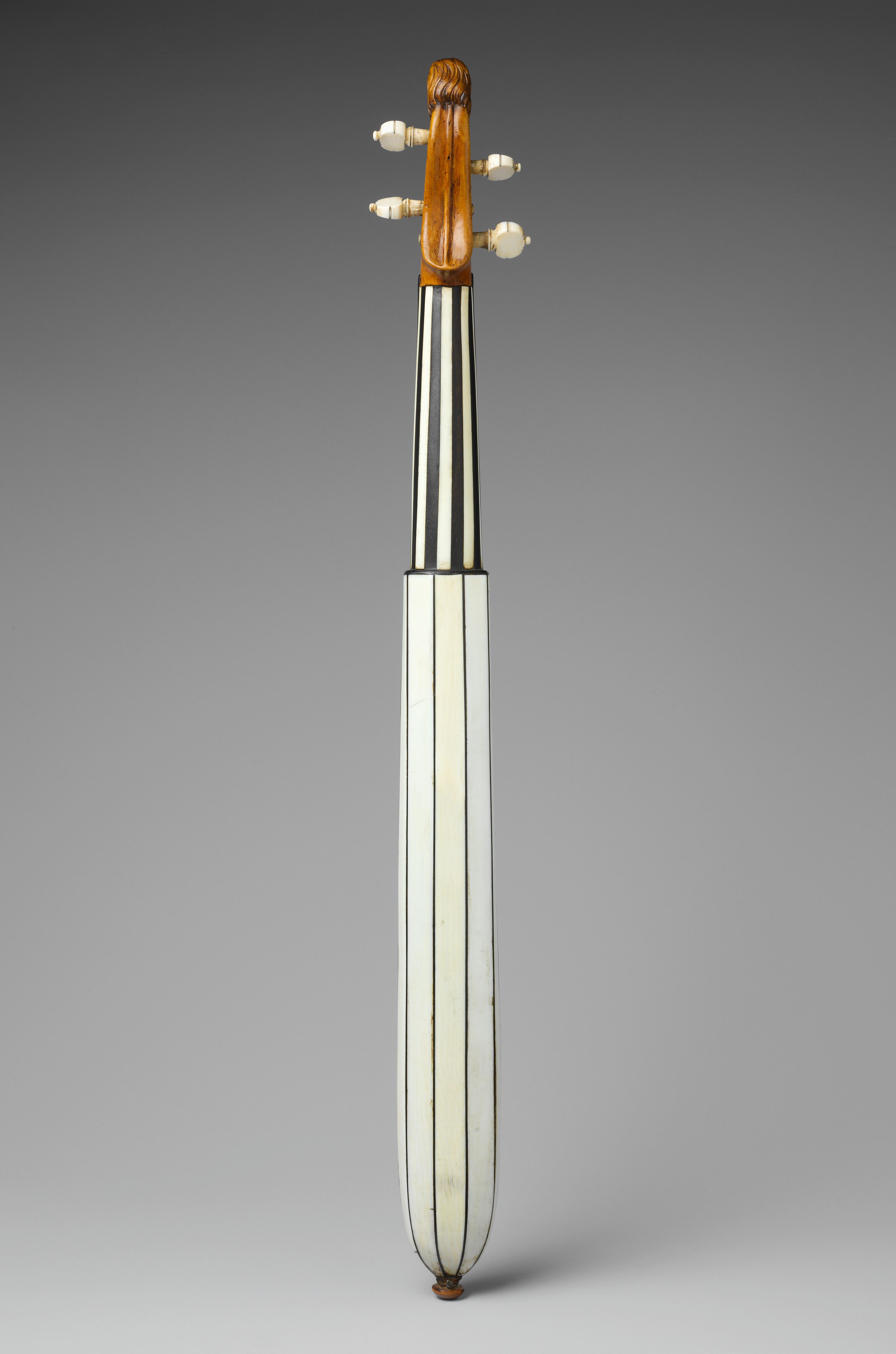Pochette
Georg Wörle German
Not on view
Dancing was an expected aristocratic accomplishment. Instruction was given at home by a visiting dance master, who played a small fiddle to provide music for the lessons. The compact, slender shape of these instruments made them easy to transport and gave them the name pochette, which suggests that they were carried in one's coat pocket. Elaborately decorated pochettes made of precious materials were often seen and collected as art objects in their own right.
Description: Narrow, boat-shaped body with five-side vaulted ivory covered back, ivory staves separated by ebony strips; wood belly with elongated C-shaped sound holes, a heart shaped hole just below fingerboard and a six-pointed star composed of six inlayed diamonds of alternating brown and black wood; tailpiece and fingerboard of alternating ivory and ebony; pegbox terminating with lion's head and holding four lateral ivory pegs.
Due to rights restrictions, this image cannot be enlarged, viewed at full screen, or downloaded.
This artwork is meant to be viewed from right to left. Scroll left to view more.



